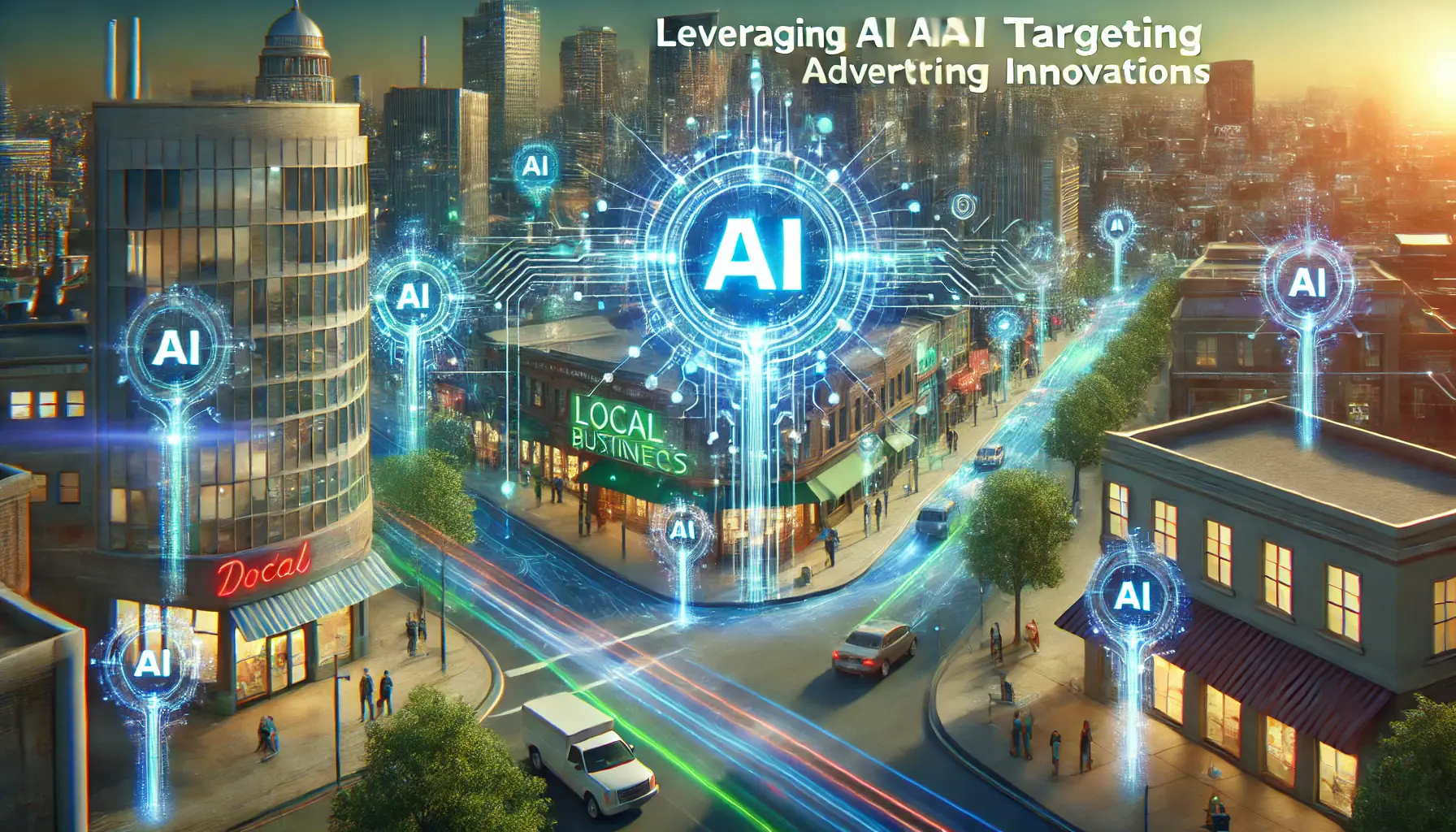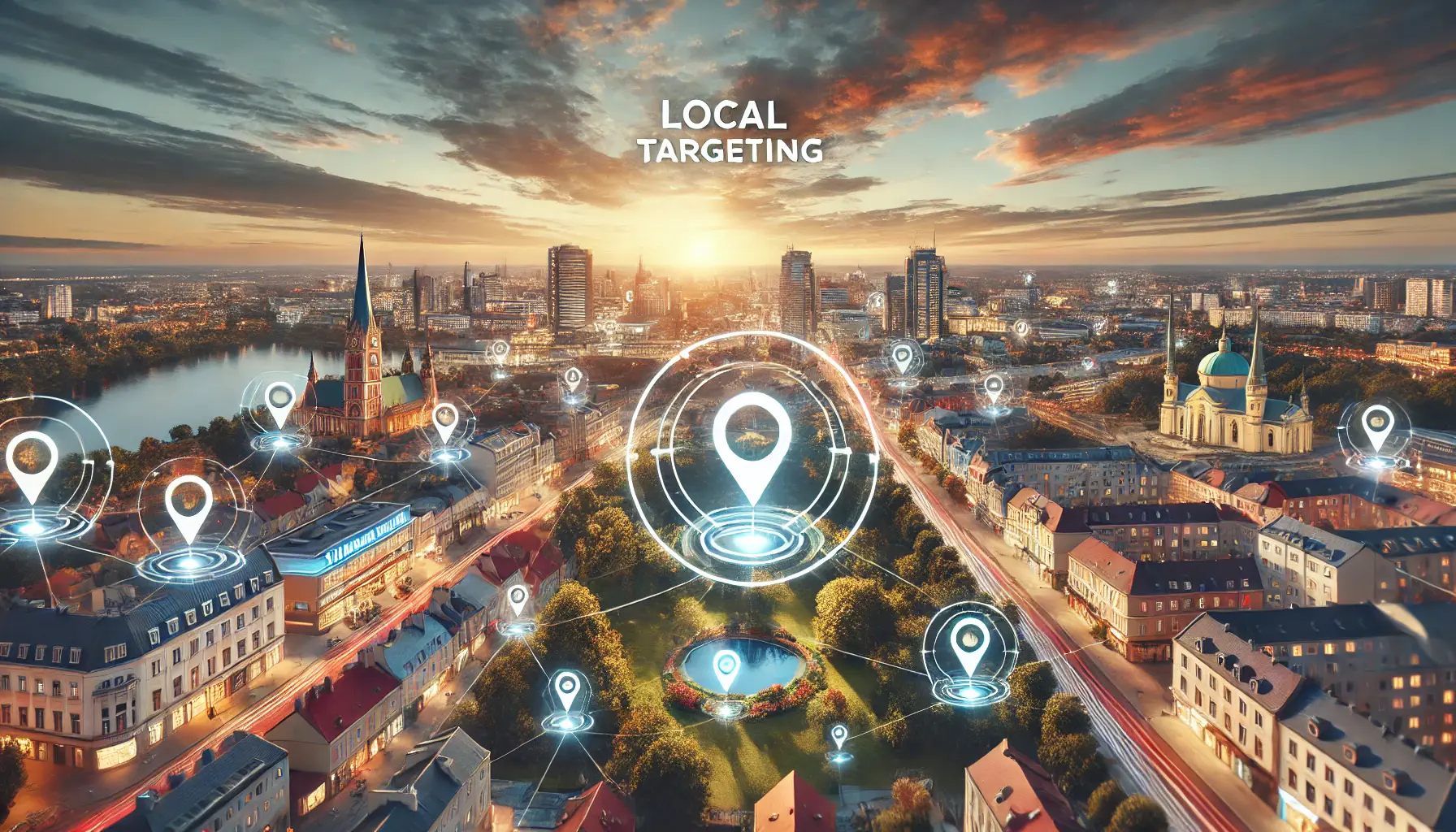Delving into the realm of hyper-local targeting, we uncover a strategic approach that revolutionizes how businesses connect with their immediate geographical audience.
This technique, pivotal in the sphere of Local SEO, leverages the power of location-based marketing to deliver tailored messages to a highly specific audience.
The essence of hyper-local targeting lies in its ability to resonate with the local community, offering solutions and services that are not just relevant but also immediately accessible.
Hyper-local targeting, as a concept, transcends traditional marketing by focusing on a narrowed down, geographically constrained area.
This approach is particularly effective in an era where digital footprints are intertwined with physical locations, thanks to the ubiquity of smartphones and location-based services.
By understanding and implementing hyper-local strategies, businesses can significantly enhance their visibility and relevance in their local communities.
- The Fundamentals of Hyper-Local Targeting
- Strategies for Effective Hyper-Local Content Creation
- Maximizing Local Events and Sponsorships
- Leveraging Local Reviews and Feedback
- Integrating Technology in Hyper-Local Marketing
- Challenges and Solutions in Hyper-Local Marketing
- Future Trends in Hyper-Local Marketing
- Embracing the Future of Hyper-Local Marketing
- Hyper-Local Targeting Techniques: FAQs
The Fundamentals of Hyper-Local Targeting
At the core of hyper-local targeting lies the understanding of a community’s unique needs and preferences.
This strategy involves analyzing local trends, consumer behavior, and even cultural nuances to craft messages that resonate deeply with the local audience.
It’s about creating a connection that feels personal, relevant, and timely.
Hyper-local targeting is not just about reaching people in a specific location; it’s about reaching the right people at the right time.
This precision is achieved through various tools and techniques, such as geofencing, local SEO optimization, and localized content marketing.
These tools enable businesses to create a virtual perimeter around a specific area, ensuring that their marketing efforts are concentrated where they matter most.
Geofencing and Its Impact
Geofencing stands out as a pivotal tool in hyper-local targeting.
It allows businesses to set up virtual boundaries around a specific geographical area.
When potential customers enter this area, they receive targeted advertisements and promotions on their mobile devices.
This technology is particularly effective for businesses like retail stores, restaurants, and service providers who want to attract nearby customers.
The impact of geofencing is profound.
It not only increases foot traffic but also enhances customer engagement by providing timely and relevant offers.
For instance, a coffee shop can send a discount coupon to a customer who is just a few blocks away, enticing them to visit.
Geofencing transforms local marketing by enabling real-time engagement with customers based on their physical location.
Local SEO: A Cornerstone of Hyper-Local Marketing
Local SEO is another cornerstone of hyper-local targeting.
It involves optimizing a business’s online presence to appear in local search results.
This includes optimizing Google My Business listings, local keywords, and ensuring that NAP (Name, Address, Phone Number) details are consistent across the web.
Effective local SEO ensures that when someone searches for a product or service in a specific area, the relevant local businesses appear at the top of the search results.
This visibility is crucial for driving local traffic, both online and offline, to the business.
Strategies for Effective Hyper-Local Content Creation
Creating content that resonates with a local audience is a critical aspect of hyper-local targeting.
This involves not just understanding the local language and culture but also addressing the specific needs and interests of the community.
Effective hyper-local content is both relatable and relevant, fostering a stronger connection with the audience.
Here are key strategies for crafting compelling hyper-local content:
- Understand Local Interests: Research and incorporate topics that are trending or relevant in the local community. This could include local events, news, or cultural references.
- Use Local Language and Slang: Employing the local dialect or slang in your content can make it more relatable and engaging for the local audience.
- Feature Local Stories and Testimonials: Sharing stories or testimonials from local customers can build trust and authenticity in your brand.
- Highlight Local Partnerships: Collaborating with local influencers or businesses can increase your reach and credibility within the community.
Localizing Social Media Efforts
Social media platforms offer a unique opportunity for hyper-local targeting.
By localizing your social media efforts, you can engage with the community more directly and personally.
This includes:
- Creating location-specific pages or groups.
- Engaging with local events and discussions.
- Using geo-tagging in posts and stories.
These tactics help in building a local online community, fostering engagement and loyalty among the audience.
Utilizing Local Influencers
Partnering with local influencers can be a powerful way to amplify your hyper-local content.
Influencers with a strong local following can lend credibility to your brand and help you reach a wider yet targeted audience.
The key is to choose influencers who align with your brand values and resonate with your target demographic.
Local influencers can provide authentic endorsements, create localized content, and engage with the community in a way that feels genuine and trustworthy.
Leveraging local influencers is about creating a sense of community and trust, not just about broadening reach.
Maximizing Local Events and Sponsorships
Local events and sponsorships present a golden opportunity for businesses to embed themselves into the fabric of the community.
These activities not only increase brand visibility but also demonstrate a commitment to the local area, fostering goodwill and loyalty among residents.
Here’s how businesses can effectively leverage local events and sponsorships:
- Participate in or Sponsor Local Events: Engaging in community events, fairs, and festivals can significantly boost brand presence. Sponsorships can range from small community gatherings to larger events, depending on the business’s capacity and target audience.
- Host Local Events: Organizing events such as workshops, seminars, or community service projects can position a business as a community leader and build deeper connections with local residents.
- Collaborate with Community Organizations: Partnering with local non-profits or community groups for events or sponsorships can enhance credibility and show genuine investment in local welfare.
Effective Use of Local Media
Local media outlets are a valuable channel for reaching a hyper-local audience.
This includes local newspapers, radio stations, and TV channels.
Advertising or getting featured in these media outlets can significantly increase local brand recognition.
Strategies for engaging with local media include:
- Press releases about local events or initiatives.
- Participating in local interviews or discussions.
- Advertising through local media channels, tailored to the local audience.
These efforts help in establishing a business as a familiar and trusted entity within the local community.
Developing Local Partnerships
Building partnerships with other local businesses can be a strategic move in hyper-local targeting.
These partnerships can lead to cross-promotion opportunities, shared marketing efforts, and a broader local network.
The key is to partner with businesses that complement your offerings and share a similar target audience.
Such collaborations can range from joint events to shared loyalty programs, offering mutual benefits and increased local engagement.
Local partnerships are not just about business growth; they’re about creating a supportive and interconnected business community.
Leveraging Local Reviews and Feedback
In the hyper-local marketing landscape, customer reviews and feedback play a crucial role.
Positive local reviews can significantly boost a business’s credibility and attract more customers.
Conversely, negative reviews offer valuable insights into areas for improvement and the chance to demonstrate excellent customer service by responding appropriately.
Here are strategies to effectively leverage local reviews and feedback:
- Encourage Reviews: Actively encourage satisfied customers to leave reviews on platforms like Google My Business, Yelp, and social media. This can be done through in-store signage, follow-up emails, or incentives for leaving a review.
- Respond to Reviews: Responding to both positive and negative reviews shows that a business values customer feedback and is committed to improving. This engagement can also turn negative experiences into positive ones.
- Highlight Positive Reviews: Showcase positive reviews on your website and social media channels. This not only promotes your business but also builds trust with potential customers.
Managing Online Reputation
Online reputation management is essential in hyper-local targeting.
It involves monitoring and influencing how your business is perceived online.
This includes keeping track of reviews, social media mentions, and local news mentions.
Effective reputation management strategies include:
- Regularly monitoring online mentions and reviews.
- Addressing negative feedback promptly and professionally.
- Creating positive content to outweigh negative mentions.
These efforts help maintain a positive image in the local community, which is vital for attracting and retaining customers.
Utilizing Customer Feedback for Improvement
Customer feedback, especially from the local community, is a goldmine of insights.
It provides direct input on what customers like, dislike, and expect from your business.
Actively seeking and implementing this feedback can lead to improved products, services, and customer experiences.
Methods for gathering and utilizing customer feedback include:
- Surveys and questionnaires.
- Feedback forms on websites or in-store.
- Engaging with customers on social media for their opinions.
By valuing and acting on customer feedback, businesses can continually evolve to meet the changing needs of their local community.
Genuine engagement with customer feedback is a key driver for continuous improvement and customer satisfaction in hyper-local marketing.
Integrating Technology in Hyper-Local Marketing
The integration of technology is a game-changer in hyper-local marketing.
Advanced tools and platforms enable businesses to target their local audience with unprecedented precision and effectiveness.
From location-based services to data analytics, technology plays a pivotal role in shaping hyper-local strategies.
Key technological integrations for hyper-local marketing include:
- Location-Based Services (LBS): Utilizing GPS and RFID technology to send promotional messages to customers in a specific geographic area.
- Data Analytics: Analyzing customer data to gain insights into local buying patterns, preferences, and behaviors.
- Mobile Marketing: Leveraging mobile platforms for targeted advertising, app-based promotions, and SMS marketing.
Location-Based Services (LBS)
LBS technology allows businesses to send targeted messages to customers based on their current location.
This can include special offers when a customer is near a store or event notifications for local happenings.
LBS marketing is highly effective due to its relevance and timeliness.
Examples of LBS include geofencing, beacon technology, and location-based push notifications.
Data-Driven Decision Making
Data analytics plays a crucial role in understanding the local market.
By analyzing customer data, businesses can tailor their offerings to meet the specific needs and preferences of the local community.
This data-driven approach leads to more effective and efficient marketing strategies.
Key data points include customer demographics, purchase history, and online behavior patterns.
Mobile Marketing Strategies
With the widespread use of smartphones, mobile marketing has become an essential component of hyper-local strategies.
This includes SMS marketing, mobile app notifications, and mobile-friendly websites.
Mobile marketing allows businesses to reach customers directly on their devices, offering convenience and immediacy.
The fusion of technology with hyper-local marketing strategies creates a dynamic and impactful way to connect with the local audience.
Challenges and Solutions in Hyper-Local Marketing
While hyper-local targeting offers numerous benefits, it also comes with its own set of challenges.
Understanding and addressing these challenges is crucial for businesses to effectively leverage hyper-local marketing strategies.
Here are some common challenges and their solutions:
- Challenge: Data Privacy Concerns: With the increasing use of location-based services, data privacy becomes a significant concern. Customers are wary of how their data is used and shared.
- Solution: Ensure transparency in data collection and usage. Obtain explicit consent from customers and adhere to data protection regulations.
- Challenge: Balancing Relevance and Intrusiveness: While personalized marketing is effective, there’s a fine line between being relevant and being intrusive.
- Solution: Tailor messages carefully and respect customer preferences. Avoid excessive targeting and ensure that communications add value to the customer’s experience.
- Challenge: Keeping Content Locally Relevant: Ensuring that content is consistently relevant and resonates with the local audience can be challenging.
- Solution: Regularly update content based on local trends and feedback. Engage with the community to stay informed about their interests and needs.
Adapting to Local Market Changes
Local markets can be dynamic, with changing trends and consumer behaviors.
Staying adaptable and responsive to these changes is key to successful hyper-local marketing.
Strategies for adapting to local market changes include:
- Regular market research and customer surveys.
- Flexible marketing strategies that can quickly adjust to changes.
- Continuous engagement with the local community for real-time insights.
By staying attuned to the local market, businesses can ensure their marketing efforts remain effective and relevant.
Measuring the Effectiveness of Hyper-Local Strategies
Measuring the success of hyper-local marketing strategies is essential for understanding their impact and guiding future efforts.
This involves tracking key metrics such as foot traffic, sales conversions, and customer engagement.
Tools for measuring effectiveness include analytics platforms, customer feedback, and sales data.
Regular analysis of these metrics helps in refining strategies and improving ROI.
Assuming a one-size-fits-all approach in hyper-local marketing can lead to ineffective strategies and missed opportunities.
Future Trends in Hyper-Local Marketing
The landscape of hyper-local marketing is continually evolving, shaped by technological advancements and changing consumer behaviors.
Staying ahead of these trends is crucial for businesses looking to maintain a competitive edge in their local markets.
Here are some emerging trends in hyper-local marketing:
- Increased Use of AI and Machine Learning: Artificial intelligence and machine learning are becoming integral in analyzing consumer data and predicting buying patterns. This technology enables more precise targeting and personalization of marketing efforts.
- Augmented Reality (AR) Experiences: AR offers innovative ways to engage customers, such as virtual try-ons or interactive ads. This technology can enhance the shopping experience and attract more customers.
- Voice Search Optimization: With the rise of smart speakers and voice assistants, optimizing for voice search is becoming increasingly important. This involves using natural language and question-based queries in SEO strategies.
Embracing Sustainability and Social Responsibility
Consumers are increasingly valuing sustainability and social responsibility in the businesses they support.
Hyper-local marketing strategies that incorporate these values can resonate deeply with the community and build long-term loyalty.
Initiatives could include supporting local environmental projects, using sustainable practices, or engaging in community service.
Personalization at Scale
Advancements in technology are enabling businesses to personalize marketing efforts at a larger scale.
This means delivering tailored messages and experiences to individual customers, even within a broad audience.
Personalization at scale involves using customer data to create highly individualized marketing campaigns, enhancing relevance and effectiveness.
Integration of Offline and Online Experiences
The future of hyper-local marketing lies in seamlessly integrating offline and online experiences.
This includes using online data to enhance in-store experiences and vice versa.
Strategies might involve online-to-offline (O2O) marketing, where online ads lead to in-store visits, or using in-store data to personalize online marketing efforts.
The future of hyper-local marketing is not just about technology; it’s about creating a holistic and immersive experience for the local consumer.
Embracing the Future of Hyper-Local Marketing
As we navigate the dynamic landscape of hyper-local marketing, it becomes evident that this approach is not just a trend but a fundamental shift in how businesses interact with their local communities.
The essence of hyper-local targeting is its ability to forge a deeper, more personal connection with the audience, leveraging the power of proximity and relevance.
This strategy, rooted in understanding and catering to the specific needs of local consumers, is reshaping the marketing world.
Key Takeaways in Hyper-Local Marketing
In summary, the journey through the intricacies of hyper-local marketing reveals several key takeaways:
- Technology, such as geofencing and data analytics, is a powerful ally in targeting local audiences effectively.
- Local content, events, and partnerships play a pivotal role in building community trust and engagement.
- Adapting to local market changes and consumer behaviors is crucial for the sustainability of hyper-local strategies.
- Emerging trends like AI, AR, and voice search optimization are set to further revolutionize hyper-local marketing.
These insights underscore the importance of staying agile and responsive to the evolving needs of the local market.
Businesses that successfully integrate these elements into their marketing strategies are likely to see enhanced engagement, loyalty, and growth in their local communities.
Looking Ahead: The Future of Hyper-Local Engagement
Looking ahead, the future of hyper-local marketing is bright and full of potential.
As technology continues to advance, so too will the opportunities for businesses to connect with their local audiences in more meaningful and innovative ways.
The key to success lies in maintaining a balance between technological advancements and the human touch – understanding that at the heart of hyper-local marketing is the relationship between a business and its local community.
In conclusion, hyper-local targeting is not just a strategy; it’s a commitment to understanding and serving the local community.
It’s about being present, relevant, and genuinely engaged with the local audience.
As businesses continue to navigate this terrain, those who master the art of hyper-local marketing will undoubtedly thrive in an increasingly connected and localized world.
Want your website to top Google search rankings? Leave the SEO to our professional agency!
Hyper-Local Targeting Techniques: FAQs
Explore the most frequently asked questions about hyper-local targeting techniques to gain deeper insights into this effective marketing strategy.
Hyper-local targeting in marketing refers to strategies that focus on a small, specific geographical area to reach a targeted audience effectively.
Geofencing in hyper-local marketing involves creating a virtual boundary that triggers targeted ads when customers enter or leave the area.
Local SEO is crucial for hyper-local strategies as it optimizes a business’s online presence to rank higher in local search results.
Yes, hyper-local targeting is highly beneficial for small businesses, allowing them to reach and engage with their immediate local audience.
Local reviews significantly impact hyper-local marketing by building trust and influencing the local community’s purchasing decisions.
Businesses can leverage local events for marketing by participating or sponsoring, thus increasing brand visibility and community engagement.
Challenges in hyper-local marketing include data privacy concerns, balancing relevance with intrusiveness, and maintaining local content relevance.
Yes, emerging technologies like AI, AR, and voice search are increasingly shaping hyper-local marketing, enhancing targeting and engagement.










